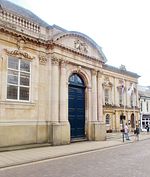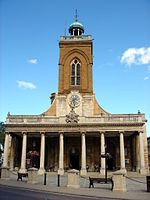Weston Favell Shopping Centre

Weston Favell shopping centre sits on the outskirts of Northampton, in the East Midlands region of England and comprises 330,000 sq ft of retail space with 68 units across 2 levels. The scheme is anchored by Tesco which is one of the Top 10 Tesco Extra format stores in the UK in terms of size. Weston Favell shopping centre also has a great selection of multinational retailers including, Wilko, Boots, WH Smith and Costa Coffee as well as a unique selection of independent retailers and service providers. The centre, which opened in 1974, is located close to many other public facilities including Lings Forum Leisure Centre, a doctors surgery, Northampton Academy, two churches and a police station. There is also a small retail park at the rear of the centre.
Excerpt from the Wikipedia article Weston Favell Shopping Centre (License: CC BY-SA 3.0, Authors, Images).Weston Favell Shopping Centre
George Row,
Geographical coordinates (GPS) Address Nearby Places Show on map
Geographical coordinates (GPS)
| Latitude | Longitude |
|---|---|
| N 52.2372 ° | E -0.896 ° |
Address
George Row
NN1 1DF , Semilong
England, United Kingdom
Open on Google Maps










